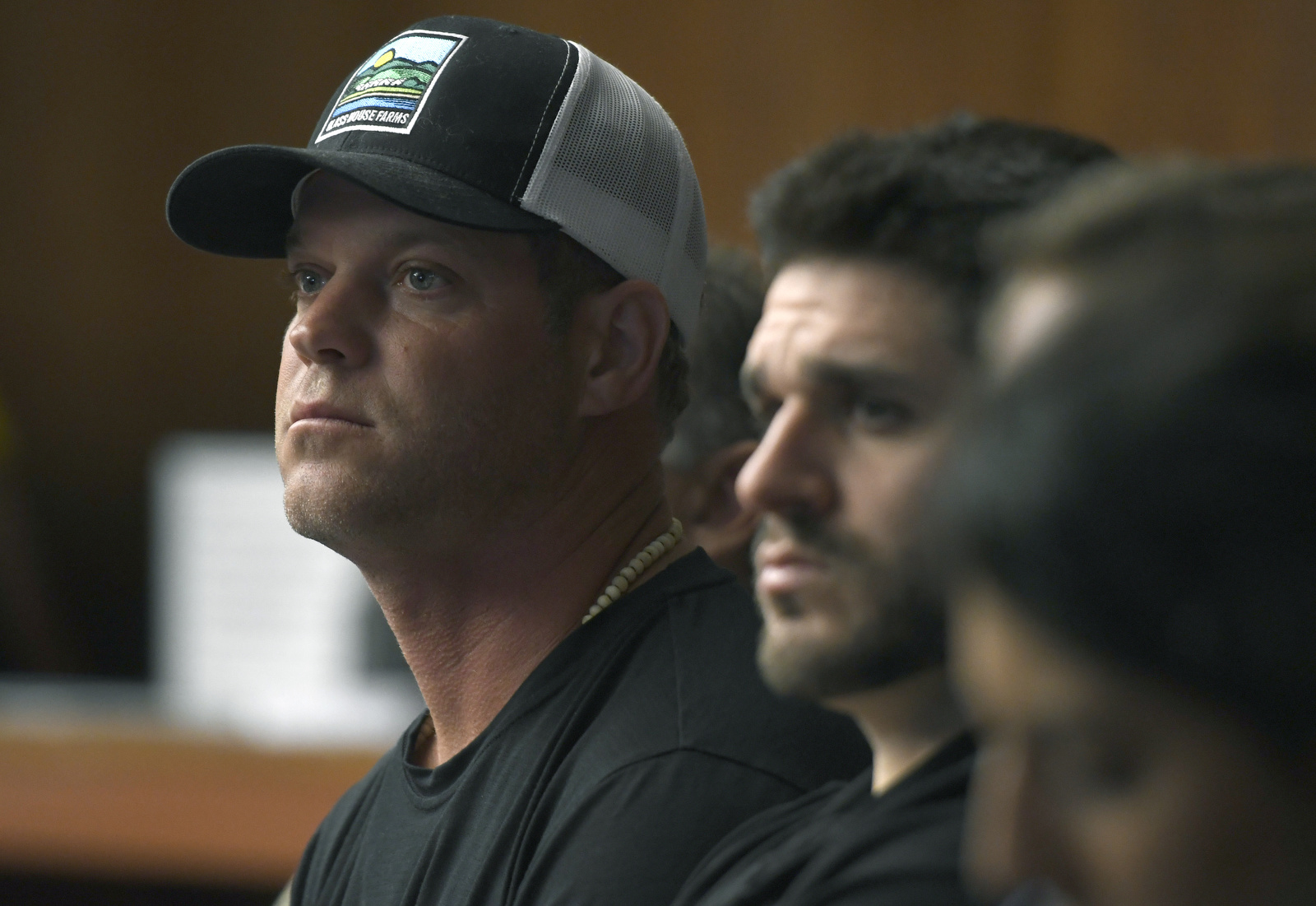Santa Barbara Planning Commission Greenlights Another Cannabis Operation
Pot Opponents Are Determined to Appeal Every Permit Permitted

It’s not exactly Godzilla versus Mothra. But in Santa Barbara, it’s the next best thing. It’s cannabis, which, like water it seems, has become all about the fighting. Depending on who you ask, last week’s knock-down-drag-out in front of the County Planning Commission over a proposed new cannabis greenhouse in Carpinteria went either six or seven hours long. Either way, I was down for the count.
In the anti-cannabis corner stood Maureen Foley Claffey — known to friends as MoFo — wearing a red blouse (the signature color of the movement), on which hung a wooden clothespin as a rhetorical flourish. Long ago, MoFo worked at the Independent as an editor and reporter. Today, she describes herself as a “farmer’s daughter,” the home-grown sprout of a family seed first planted in the Carpinteria Valley in the 1860s, and, more importantly, the mother of a 7-year-old girl. At the podium, MoFo is whirlwind. And she is pissed. She’s pissed about a lot of things. But at the top of the list is, of course, the smell.
In the other corner stood Graham Farrar, a home-grown Goleta boy himself, who often recalls riding his bike past lemon orchards now turned into condos. Farrar looks a little like a grown-up version of Opie — the kid on The Andy Griffith Show. Except in this case, Opie happens to be anentrepreneurial savant with a cyborg’s analytic brain, who dropped out of high school and managed to get in on the ground floor with such stratospheric home-grown start-ups as Sonos and Software.com.
Some people have good timing. Other people are good timing.
Today, Farrar’s big into cannabis. He’s about to open the first recreational dispensary in the City of Santa Barbara, and he’s already got one greenhouse raising commercial grade bud in Carpinteria. Now, he’s pushing to open another — about 350,000 square feet’s worth — off Foothill Road.
Claffey, who represents a group, also home-grown, called Concerned Carpinterians, as well as a broader coalition of anti-cannabis activists from all over the county who are running a take-no-prisoners campaign determined to appeal every land-use permit issued to every single cannabis cultivator. It was their bad luck that Farrar happened to be the first.
The planning commissioners clearly trust Farrar. He’s not cute. He doesn’t cut corners. He’s by the book. He’s excruciatingly straight up. And they said as much from the dais. More than any grower, Farrar has reached out to cannabis critics. He’s been relentless. Claffey would say too relentless. Farrar testified he contacted her three times after she filed her appeal to see if they could talk. Claffey testified it was three times within 12 hours. She felt stalked. “I was a little intimidated,” she told the Planning Commission.
Yes, it’s like that.

Spoiler alert: The Planning Commission vote was 4-1 in Farrar’s favor. On paper, that seems like a slam dunk. In reality, it’s considerably tighter. To get there, the commissioners found themselves forced to get under the hood and tinker enough to get their knuckles bloody. Finally, they added new conditions to better protect residents from mephitic odors emanating in errant effluvial abundance from Carpinteria’s 24 cannabis greenhouse operations. New operations, the commissioners decreed, had to demonstrate that their odor-neutralization systems worked — no smells experienced in residential neighborhoods — from day one. The current lingo — as mushy as wet toilet paper — outlined instead a remedial path that kicks in only after there have been three complaints.
From where I sit, this change was the good news. The bad news? That such alterations were necessary in the first place.
By now, everyone knows Carpinteria has an odor issue where cannabis is concerned. How bad, it seems, lies largely in the nose of the beholder. But here’s the deal: There are 24 large-scale cannabis greenhouses now operating in Carpinteria. Of those, only 14 have odor-control systems, twelve of which are licensed by a guy named Marc Byers. A one-time private banker, Byers is now providing odor-control services for a Canadian outfit that he claims is the biggest weed company in all of North America. He equips greenhouses with specially engineered PVC pipes that shoot either “a halo” or “a curtain” of essential-oil-infused vapors into the air, where they combine with cannabis “malodors” to form a brand-new compound that the human nose reportedly does not detect. Byers says his system is 90 percent effective. MoFo was less than impressed. The dead skunks she used to smell all the time, she said, have now been replaced by emanations akin to human “flatulence.” That’s an improvement? Her pot-growing neighbor (not Farrar), however, suggested the fart-like aromas now crinkling MoFo’s nose might be better explained by the ten cows penned up no less than 1,000 feet from her home.
It was like that.
The latest issue to emerge in the cannabis debate has to do with Volatile Organic Compounds (VOCs), which in certain conditions combine with sunlight and nitrogen oxide to form smog. The terpenes giving cannabis its stink are, in fact, VOCs. Critics of cannabis have seized upon this fact — and a study produced by a certified Big Brain from the University of North Carolina that suggests we are about to smogify ourselves into oblivion with cannabis. Maybe. Or maybe not. Farrar paid the Big Brain to fly from North Carolina to testify that in Santa Barbara, the ocean, the trees, and agricultural plants now produce 39,000 tons a year of naturally generated VOCs. Cannabis in Carp produces five of those. In other words….
It may not be Godzilla versus Mothra, but it ain’t over. Not by a long shot. In fact, it’s only just starting.




You must be logged in to post a comment.